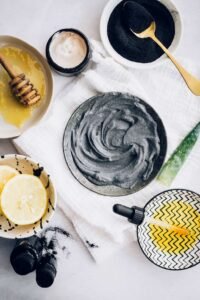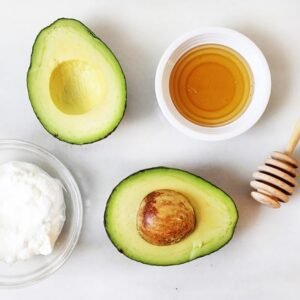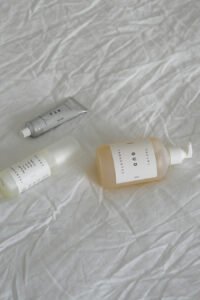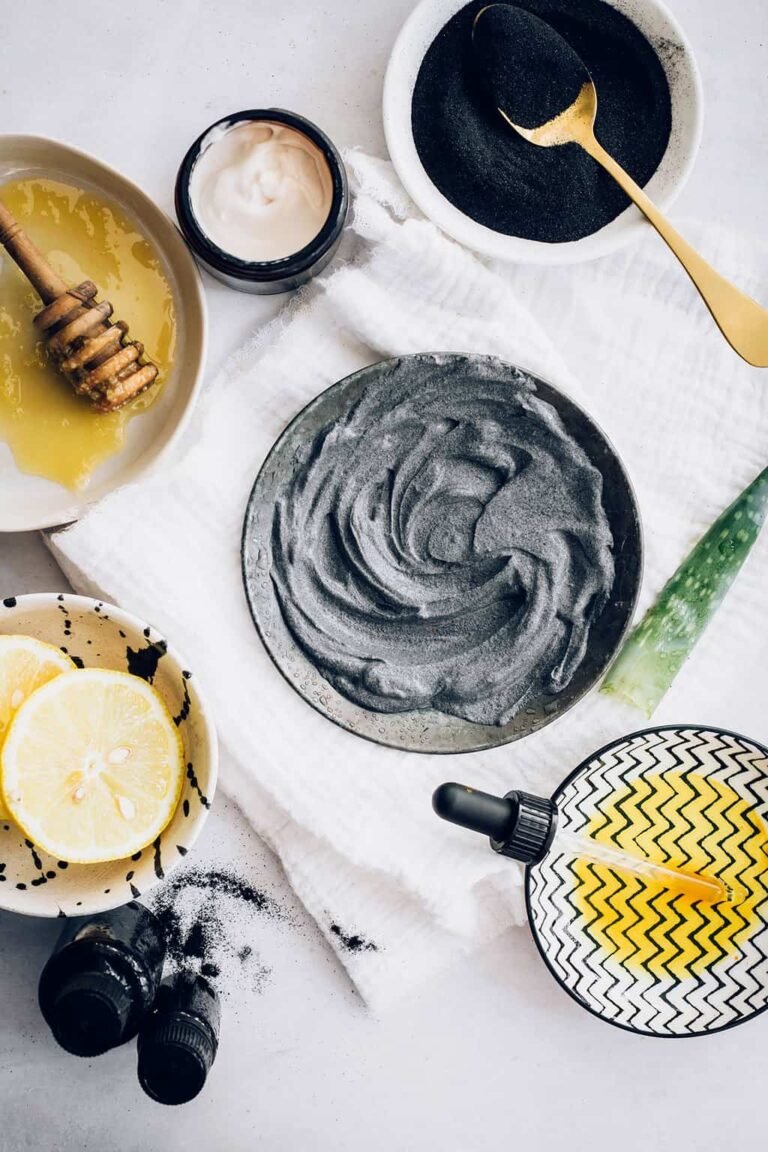✨ Niacinamide vs. Vitamin C — Can You Use Them Together?
If you’ve spent any time scrolling through skincare TikTok or browsing beauty shelves lately, you’ve probably seen two superstar ingredients everywhere: Niacinamide and Vitamin C. Both promise glowing, even-toned, radiant skin — but with so much buzz, it’s easy to wonder: what’s the real difference between them? And more importantly, can you actually use them together without causing chaos on your skin? 😅
These two actives have a bit of a “frenemy” reputation in the skincare world. For years, people believed they couldn’t be mixed — that layering Niacinamide and Vitamin C would cancel out their benefits or cause irritation. But as science (and skincare formulations) have evolved, that old myth has been officially debunked. 🙌
In this post, we’ll break down everything you need to know about Niacinamide vs. Vitamin C — what each ingredient does, how they differ, how to combine them safely, and how they can work together to give you smoother, brighter, and more resilient skin. Ready to glow smarter? Let’s dive in! 🌞💧

What is Niacinamide and Why It’s a Skincare Favourite
Niacinamide is a water-soluble form of vitamin B3. According to dermatology sources, it has an impressive range of benefits: it helps build ceramides (which support your skin barrier), has anti-inflammatory properties, regulates oil/sebum production, can help reduce the appearance of pores, and works on uneven skin tone. themedermatology.com+1
Highlights of Niacinamide’s benefits:
Strengthens the skin barrier and boosts hydration. Woman & Home+1
Reduces redness, calms inflammation (great if you have acne-prone or sensitive skin). themedermatology.com+1
Helps even skin tone and reduce visible pores. foxtale.in+1
Works well for oily and combo skin because it can reduce oil production. Reddit+1
One point to note: It is often regarded as gentler than some other actives. For people with sensitive skin, niacinamide tends to be better tolerated. Woman & Home
So if you’re building a minimalist routine or you’ve got reactive skin, niacinamide is a strong contender.
What is Vitamin C and Why It’s a Skincare Powerhouse
Vitamin C in skincare (typically in the form of ascorbic acid or other stable forms) is one of the most talked-about actives. Why? Because it punches above its weight in brightening, antioxidant defence, and collagen-boosting. themedermatology.com+1
Key benefits of Vitamin C:
Powerful antioxidant: helps protect skin from oxidative stress and environmental damage (pollution, UV etc). themedermatology.com+1
Brightens skin and helps fade dark spots / hyperpigmentation. foxtale.in+1
Stimulates collagen production, which supports firmness and reduces signs of ageing (fine lines etc). Emogene & Co
Helps even skin tone and support clarity.
But — Vitamin C has a few caveats: it can be a little fiddlier to formulate, it may irritate more sensitive skin (especially at high percentages or in poor formulations), and some forms of it are less stable (oxidise, lose potency) unless packaged well. themedermatology.com+1
Niacinamide vs. Vitamin C: What’s the Difference?
Let’s compare them side-by-side to make things clearer:
| Feature | Niacinamide | Vitamin C |
|---|---|---|
| Primary role | Barrier support, calming, reducing oil/action on pores, overall skin health | Brightening, antioxidant protection, collagen stimulation |
| Best for skin types | Sensitive skin, oily/acne-prone skin, those prioritising barrier repair | Dull skin, pigmentation, ageing skin, smokers or exposed to environment stress |
| Tolerance | Generally very good for most skin types | Can be more irritating, especially at high % or if you have sensitive skin Woman & Home+1 |
| Typical concerns addressed | Redness, uneven tone, visible pores, oiliness | Dark spots, dullness, wrinkles, sun damage |
| Stability / formulation issues | Less finicky | More sensitive — requires good packaging, proper pH, stable form DS Healthcare Group |
In everyday terms: If your skin is shouting “I’m red or flare-up prone!”, niacinamide might be your calmer friend. If your skin is saying “meh, I’m lacklustre, I’ve got spots or sun damage”, Vitamin C could be the go-to. Of course—many people have both concerns! Woman & Home

Can You Use Niacinamide and Vitamin C Together?
Yes — and many experts say you should consider combining them (or at least having both in your routine). The old skincare urban legend that Niacinamide and Vitamin C “neutralise each other” is largely outdated. Byrdie+1
What the science says
According to cosmetic chemists and dermatologists, the idea that niacinamide + ascorbic acid react to form “nicotinic acid” (which could irritate) comes from old 1960s studies using very high heat, unrealistic conditions. Not how most skincare works today. Byrdie
Modern formulations, proper packaging and safe usage mean the two ingredients “play well together”. In fact, they offer complementary benefits: Vitamin C handles the oxidative damage/brightening side, while niacinamide supports barrier, reduces inflammation, and keeps everything stable. Byrdie+1
How to layer them safely
Here are practical tips:
Use Vitamin C in the morning (because of its antioxidant & environmental defence role) and follow with sunscreen.
Use Niacinamide morning or night — especially if you have oily, acne-prone, or sensitive skin.
If you want to use them together, apply the one with the lower pH / thinner formula first. Generally: Vitamin C serum → wait a minute → Niacinamide serum → moisturizer. DS Healthcare Group+1
Or choose a product that contains both (some do!).
Always patch test when introducing new actives.
If your skin is very sensitive, you might alternate days: one morning Vitamin C, other morning Niacinamide.
Don’t forget sunscreen: when you’re using active brightening/antioxidant ingredients, sunscreen is non-negotiable.
Why it works
Because they work through different mechanisms:
Vitamin C inhibits tyrosinase (an enzyme involved in pigment/dark spots) and helps brighten.
Niacinamide helps reduce transfer of pigment, support barrier and reduce inflammation. So using both hits the issue from multiple angles. Byrdie+1
The combination enhances overall skin health: barrier + brightness + antioxidant + tone = a better result than doing just one.
My Recommendation: How You Might Build a Routine
Here’s a sample skincare routine incorporating both — adjust to your skin type and schedule:
Morning
Cleanser
Vitamin C serum (choose a stable form: e.g., L-ascorbic acid, or derivatives) → apply evenly
Niacinamide serum (if you’re layering) OR skip and just use your normal moisturizer
Moisturizer
Sunscreen (SPF 30 or higher) — very important!
Evening
Cleanser
Niacinamide serum (especially good for nights)
Moisturizer (and any other actives you use, but avoid too many strong actives at once)
(Optional) If your skin tolerates it, you could use Vitamin C at night instead of morning — but many prefer morning.
Alternate approach
Morning: Vitamin C only
Evening: Niacinamide only
This gives your skin time to absorb each and reduces potential for irritation.
If you have sensitive skin: start with a low concentration of both (e.g., Niacinamide 2-5 %, Vitamin C 10-15 %) and every other day until you know how your skin responds. As one Reddit user put it:
“I prefer niacinamide because it’s a much less finicky ingredient (can go in basically any formulation), and personally performs better on my skin.” Reddit
Good advice!
Final Thoughts 💡
Both Niacinamide and Vitamin C are excellent skincare ingredients in their own right.
They have different strengths, so the “vs” title is slightly misleading: really it’s “which one for which concern” and “how to use together”.
Yes — you can and should use them together (or at least have both in your routine) if your skin tolerates it. The synergy is powerful.
Start slowly, patch test, choose good formulas, layer smartly, and always use sunscreen.
Listen to your skin! If irritation occurs, reduce frequency or concentration.
Remember: skincare isn’t magic, but consistent use + good habits = visible results.








